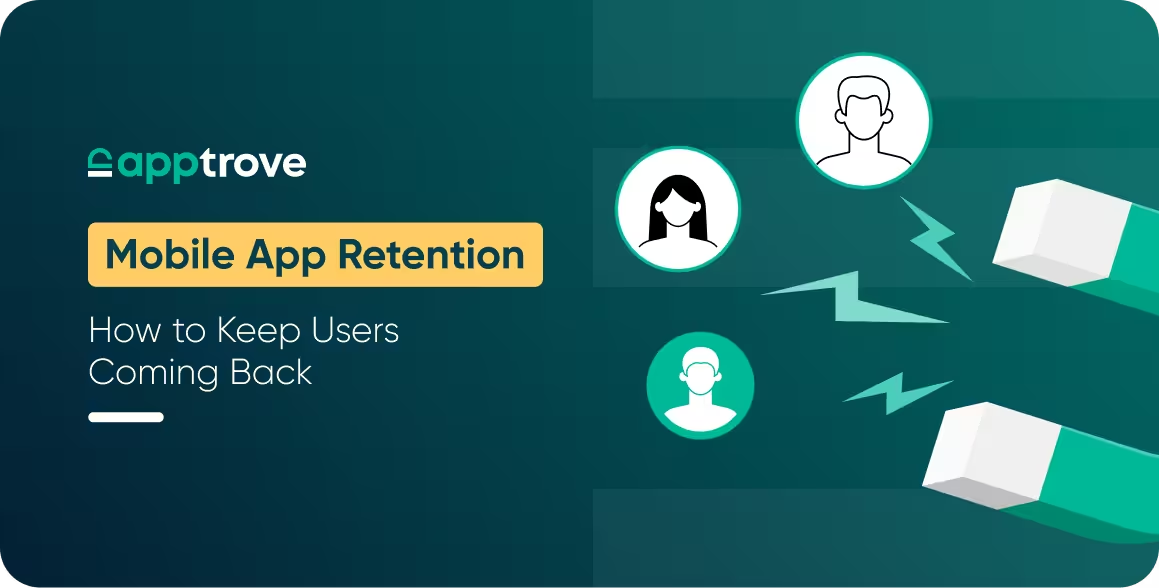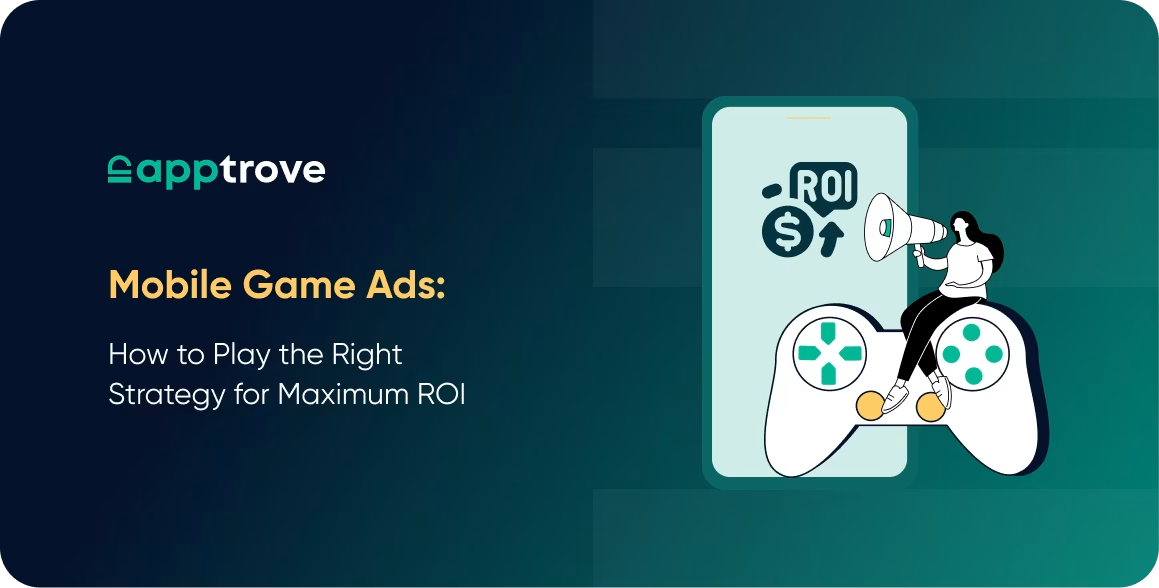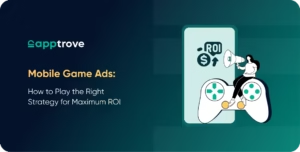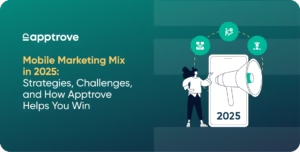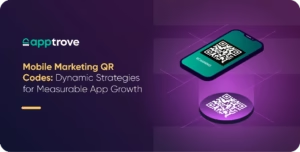Many apps are created with a dream, but only a few turn into empires.
If you’ve ever asked yourself why some apps hit the charts and others remain stagnant in the App Store basement, the answer is more than just running ads. It is app marketing that is strategic, iterative, and brutally data-driven.
It’s not enough to simply build a great app in the hyper-competitive app ecosystem we now live in. With over 3.5 million applications in Google Play and 2.1 million in the App Store, making sure your app gets noticed and ultimately downloaded is going to take more than simply making it available.
This is where app marketing turns into your superpower. App marketing is not about being louder. It’s about speaking to the right user, at the right moment, with the right message, and doing it right across every touchpoint consistently.
At Apptrove, we can spot the difference between an average app and a great app, and in this blog, we’re going to explore what it is that the top 5% of apps are doing to successfully grow, continue to rank, and remain relevant.
What is App Marketing?
App marketing refers to the strategies and tactics of how to market an app in order to have an impact on discoverability, downloads, engagement, and app retention. It should be an ongoing cycle or life cycle promoted by the behavior of users, advances in technology, and the evolution of markets.
It starts long before your app even exists, and continues well after the first download. Marketing is the force that holds together the acquisition, activation, retention and revenue phases of the user journey.
Whether you’re targeting casual gamers, health freaks, or millennial fintech users, your mobile app marketing approach is what determines whether your app becomes a daily routine, or gets deleted.
Good app marketing will include:
- User Acquisition: You attract new users using any number of channels such as social media, search ads, influencer marketing, etc.
- User Engagement: You actively keep users interested in the app through personalized recommended content, notifications, app updates, and more.
- User Retention: You can keep users returning to your app for a number of reasons, like loyalty, gamification, value-added features of the app, etc.
While digital marketing encompasses the overall marketing, mobile app marketing is focused on optimizing the entire app context from the App Store page experience to post-install engagements.
Solid marketing is not just a campaign for high-performing apps. It’s an ongoing function that shifts and adapts to user personas, behavioral shifts, platform modifications, changes in the competitive landscape, and much more.
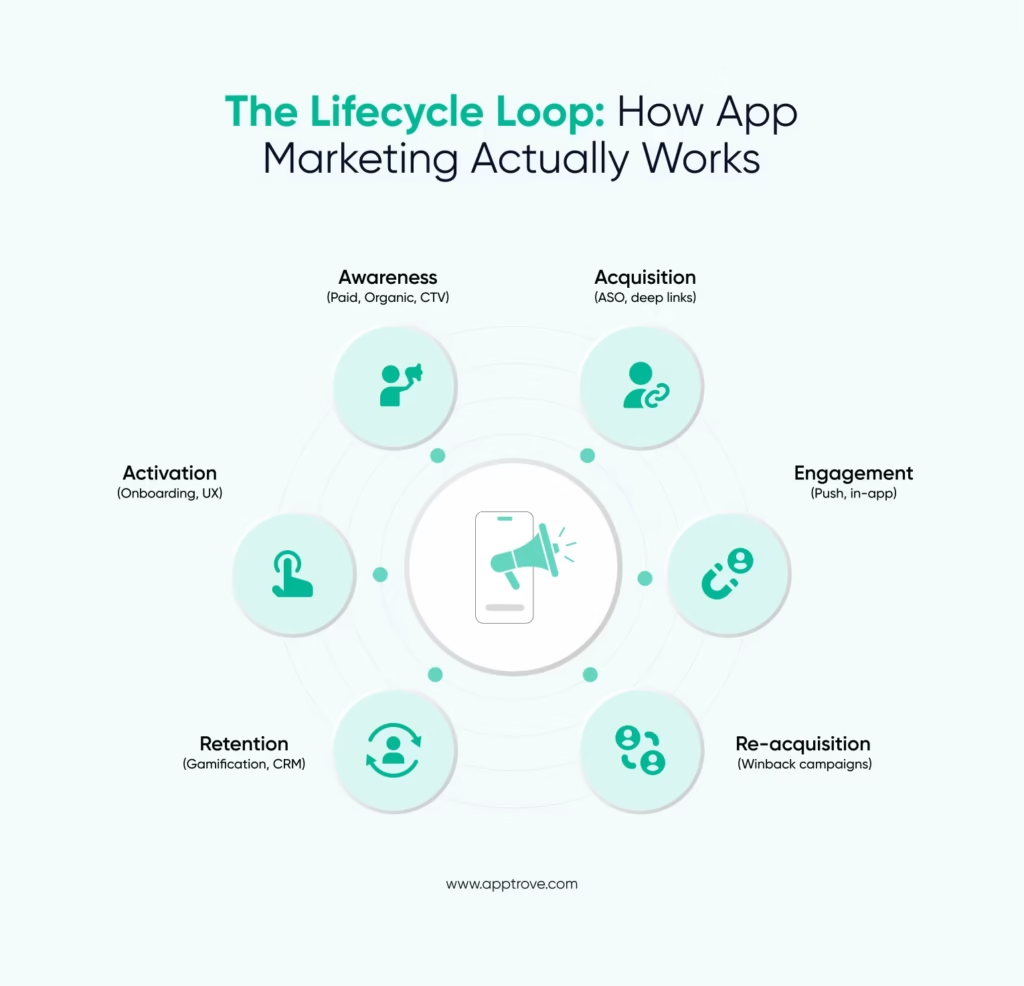
4 Types of App Marketing You Can’t Afford to Ignore
If you wouldn’t launch a startup without a business plan, why launch an app without an app marketing strategy that is thorough and sufficient? Top-performing apps are driven by messages that can be backed by intent, using data-driven experimentation, and targeted distribution across owned, earned, and paid channels.
When you’re investing real money and real time, you can’t afford to guess. Here’s a breakdown of the most successful methods that top app teams use:
1. App Store Optimization (ASO)
App Store Optimization (ASO) is like Search Engine Optimization (SEO) for app stores. ASO makes it easier for your app to rank in search results within Google’s Play Store or Apple’s App Store. You can use Apptrove to assess which ASO changes really drive downloads and in-app actions. Some important ASO tactics are:
- Keyword optimization in your app title and description
- A/B testing screenshots and icons
- Localizing content for different markets
- Managing ratings and replying to user reviews
2. Organic Social Media Marketing
Social media acts as your app’s handshake. It’s where you create vibes, community, and conversion pipelines without actually running paid ads. Think of apps whose social presence isn’t just on-brand, it is the brand.
Here is how to differentiate yourself:
- Create content formats that your users engage with (memes, how-tos, BTS)
- Don’t post just for the sake of posting. Create consistent but experimental content.
- Build community through comments, polls, and UGC (user-generated content)
3. Influencer Marketing
Honestly, most people trust and would rather take app advice from someone they subscribe to on YouTube rather than from your copywriting. Influencer collaborations add credibility, reach, and even drive conversions, especially if you are targeting niche audiences or Gen Z.
Research says that 69% of consumers trust influencers more than branded messaging. So, whether it’s micro-creators on TikTok or niche YouTube creators in your category, make influencer outreach a campaign pillar versus an afterthought.
4. In-App Advertising & Cross-Promotion
You can run in-app ads, promoting your app, inside other apps, such as a rewarded video in a casual game. Alternatively, you can simply put ads inside your app and earn revenue. In-app advertising works both ways and is a great monetization opportunity, especially for freemium apps. Thus, make it a part of your user acquisition strategy, preferably as contextual targeting too.

What the Top 5% of Apps Do to Keep Users Engaged
Winning an install is just Day 1, but here is how the best apps keep users coming back for more:
1. User is at the center of the experience
Sticky apps create personalized experiences, from personalized onboarding to push messages attuned to someone’s real-time behavior. With an app such as Apptrove, you can split test and analyze behavioral cohorts of users to optimize campaigns for each cohort, based on whatever behavioral data you find most valuable.
2. They add moments of delight
Special micro-moments of delight, such as surprise discounts, gamified badges, or progress trackers, shift emotion from useful to habitual.
3. They act on user feedback
Regular feedback prompts give users a sense that their voice matters, and let you get needed feedback and iterate rapidly.
4. They remove friction while re-engaging
Whether it’s a deep link, email, or re-targeting efforts, there shouldn’t be any friction or frustration with getting back to where they left off.
5. They know when to interrupt the user and when not to
Push notifications can be a powerful medium, but also an easy way to overreach. Smart apps know when to send push notifications based on user intent and when the user is most likely to engage, including time of day and real engagement windows.
Mapping Your App’s Success With App Marketing
Successful app marketing is not a one-off activity but an ongoing process that responds to user behavior, market trends, and changes in technology. By knowing the core principles of app marketing and executing time-tested mobile app marketing hacks, businesses can maneuver in the world of mobile.
Apptrove’s solutions is here to make mobile app marketing easier for you. Explore our App Marketing Solutions to enhance your app’s success.
Frequently Asked Questions (FAQs)
1. How does app marketing differ from general mobile marketing?
While mobile marketing encompasses all marketing activities on mobile devices, app marketing specifically focuses on promoting mobile applications to drive downloads, engagement, and retention.
2. What metrics are crucial in app marketing?
Key metrics include install rates, user retention, lifetime value (LTV), and conversion rates.
3. How often should I update my app marketing strategy?
Regularly reviewing and updating your strategy, at least quarterly, ensures alignment with market trends and user preferences.
4. Can small businesses benefit from app marketing?
Absolutely. With targeted strategies and efficient resource allocation, small businesses can effectively promote their apps and compete in the market.
5. What role does user feedback play in app marketing?
User feedback provides insights into user preferences and pain points, guiding improvements and enhancing user satisfaction.

